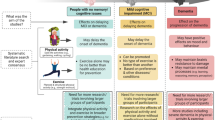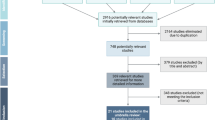Abstract
Objectives
Analysis of variations of nutritional status in relation to psycho-functional conditions in elderly patients with mild to moderate Alzheimer’s disease (AD) by means of bioelectrical impedance vector analysis (BIVA).
Design
Cross-sectional study. Setting: Alzheimer Center, SS. Trinità Hospital, Cagliari (Italy).
Participants
83 free-living patients (29 men, 54 women) with mild-moderate Alzheimer’s disease, aged 66 to 96 years, and 91 age-matched controls (37 men and 54 women).
Measurements
Nutritional status was evaluated by anthropometry (weight, height, waist and upper arm circumferences, triceps skinfold; body mass index, BMI; arm muscle area, AMA); Mini Nutritional Assessment, MNA®; bioelectrical impedance vector analysis, BIVA. Psycho-functional status was assessed by the Mini Mental State Examination (MMSE), Geriatric Depression Scale (GDS), Activities of Daily Living (ADL), and Instrumental Activities of Daily Living (IADL).
Results
Compared to the control groups, patients with Alzheimer’s disease had a worse psycho-functional and nutritional status. BIVA detected lower body cell mass in Alzheimer’s patients with respect to controls (men: T2= 23.4; women: T2=27.3; p<0.01), as well as in the female patients with lower levels of IADL and MMSE (respectively, T2= 8.0; T2=7.4; p<0.05). In patients with AD, a worse psycho-functional status was associated with obesity.
Conclusion
The psycho-functional decline of patients with AD is related to body composition variations, with a relative increase of fat mass with respect to the muscle component. The BIVA technique distinguished patients from controls and patients with different levels of cognitive decline. Therefore, it is a suitable tool for the screening and monitoring of nutritional status in Alzheimer’s disease.
Similar content being viewed by others
Abbreviations
- BIVA:
-
Bioelectrical Impedance Vector Analysis
- MNA®:
-
Mini Nutritional Assessment
- AMA:
-
arm muscle area
- CDR:
-
Clinical Dementia Rating
- NINCDS-ADRDA:
-
National Institute of Neurological and Communicative Disorders and Stroke and Alzheimer’s Disease and Related Disorders
- MMSE:
-
Mini Mental State Examination
- R:
-
Resistance
- Xc:
-
Reactance
- Z:
-
Impedance
- DSM-IV:
-
Diagnostic and Statistical Manual of Mental Disorders
- ADL:
-
Activities of Daily Living
- IADL:
-
Instrumental Activities of Daily Living
- GDS:
-
Geriatric Depression Scale
References
Belmin J, Expert Panel and Organisation Committee (2007) Practical guidelines for the diagnosis and management of weight loss in Alzheimer’s disease: a consensus from appropriateness ratings of a large expert panel. J Nutr Health Aging 11:33–37.
Gillette Guyonnet S, Abellan Van Kan G, Alix E, Andrieu S, Belmin J, Berrut G, Bonnefoy M, Brocker P, Constans T, Ferry M, Ghisolfi-Marque A, Girard L, Gonthier R, Guerin O, Hervy MP, Jouanny P, Laurain MC, Lechowski L, Nourhashemi F, Raynaud-Simon A, Ritz P, Roche J, Rolland Y, Salva T, Vellas B (2007) International Academy on Nutrition and Aging Expert Group. IANA (International Academy on Nutrition and Aging) Expert Group: weight loss and Alzheimer’s disease. J Nutr Health Aging 11:38–48.
White H, Pieper C, Schmader K (1998) The association of weight change in Alzheimer’s disease with severity of disease and mortality: a longitudinal analysis. J Am Geriatr Soc 46:1223–1227.
Beydoun MA, Beydoun HA, Wang Y (2008) Obesity and central obesity as risk factors for incident dementia and its subtypes: a systematic review and meta-analysis. Obes Rev 9:204–218.
Cortes F, Nourhashémi F, Guérin O, Cantet C, Gillette-Guyonnet S, Andrieu S, Ousset PJ, Vellas B (2008) REAL-FR Group. Prognosis of Alzheimer’s disease today: a two-year prospective study in 686 patients from the REAL-FR Study. Alzheimers Dement 4:22–29.
Guerin O, Soto ME, Brocker P, Robert PH, Benoit M, Vellas B, REAL.FR Group (2005) Nutritional status assessment during Alzheimer’s disease: results after one year (the REAL French Study Group). J Nutr Health Aging 9:81–84.
Magri F, Borza A, Del Vecchio S, Chytiris S, Cuzzoni G, Busconi L, Rebesco A, Ferrari E (2003) Nutritional assessment of demented patients: a descriptive study. Aging Clin Exp Res 15:148–153.
Vellas B, Lauque S, Gillette-Guyonnet S, Andrieu S, Cortes F, Nourhashemi F, Cantet C, Ousset PJ, Grandjean H, REAL.FR Group (2005) Impact of nutritional status on the evolution of Alzheimer’s disease and on response to acetylcholinesterase inhibitor treatment. J Nutr Health Aging 9:75–80.
Dumont C, Voisin T, Nourhashemi F, Andrieu S, Koning M, Vellas B (2005) Predictive factors for rapid loss on the mini-mental state examination in Alzheimer’s disease. J Nutr Health Aging 9(3):163–167.
Guigoz Y, Vellas B, Garry PJ (1994) Mini Nutritional Assessment: A practical assessment tool for grading the nutritional state of elderly patients. Facts Res Geront 2:15–59.
Beydoun MA, Lhotsky A, Wang Y, Dal Forno G, An Y, Metter EJ, Ferrucci L, O’Brien R, Zonderman AB (2008) Association of adiposity status and changes in early to midadulthood with incidence of Alzheimer’s disease. Am J Epidemiol 15;168(10):1179–1189.
Ellis KJ, Bell SJ, Chertow GM, Chumlea WC, Knox TA, Kotler DP, Lukaski HC, Schoeller DA (1999) Bioelectrical impedance methods in clinical research: a follow-up to the NIH Technology Assessment Conference. Nutrition 15:874–880.
Piccoli A, Rossi B, Pillon L, Bucciante G (1994) A new method for monitoring body fluid variation by bioimpedance analysis: the RXc graph. Kidney Int 46:534–539.
Barbosa-Silva MC, Barros AJ (2005) Bioelectrical impedance analysis in clinical practice: a new perspective on its use beyond body composition equations. Curr Opin Clin Nutr Metab Care 8:311–317.
Buffa R, Floris G, Marini E (2009) Assessment of nutritional status in free-living elderly individuals by bioelectrical impedance vector analysis. Nutrition 25:3–5.
Norman K, Smoliner C, Valentini L, Lochs H, Pirlich M (2007) Is bioelectrical impedance vector analysis of value in the elderly with malnutrition and impaired functionality? Nutrition 23:564–569.
Buffa R, Mereu RM, Putzu PF, Floris G, Marini E (2010) Bioelectrical impedance vector analysis detects low body cell mass and dehydration in patients with Alzheimer’s disease. J Nutr Health Aging 14:823–827.
Folstein MF, Folstein SE, McHugh PR (1975) “Mini-mental state”. A practical method for grading the cognitive state of patients for the clinician. J Psychiatr Res 12:189–198.
Katz S, Ford AB, Moskowitz RW, Jackson BA, Jaffe MW (1963) Studies of Illness in the Aged. The Index of ADL: a Standardized Measure of Biological and Psychosocial Function. JAMA 185:914–919.
Lawton MP, Brody EM (1969) Assessment of older people: self-maintaining and instrumental activities of daily living. Gerontologist 9:179–186.
Yesavage JA, Brink TL, Rose TL, Lum O, Huang V, Adey M, Leirer VO (1982–1983) Development and validation of a geriatric depression screening scale: a preliminary report. J Psychiatr Res 17:37–49.
Lohman TG, Roche AF, Martorell R (1988). Anthropometric Standardization Reference Manual. Champaign IL: Human Kinetics.
Heymsfield SB, McManus C, Smith J, Stevens V, Nixon DW (1982) Anthropometric measurement of muscle mass: revised equations for calculating bone-free arm muscle area. Am J Clin Nutr 36:680–690.
World Health Organization (2000) Obesity: preventing and managing the global epidemic. Report of a WHO consultation. World Health Organ Tech Rep Ser. 894:i–xii, 1–253.
N.I.H. National Institute of Health (1996) Clinical Guidelines on the Identification, Evaluation, and Treatment of Overweight and Obesity in Adults—The Evidence Report. National Institutes of Health. Obes Res 6Suppl 2:51S–209S.
Kondrup J, Allison SP, Elia M, Vellas B, Plauth M (2003) Educational and Clinical Practice Committee, European Society of Parenteral and Enteral Nutrition (ESPEN). ESPEN guidelines for nutrition screening 2002. Clin Nutr 22:415–421.
Morley, JE (1997) Anorexia of aging: physiologic and pathologic. Am J Clin Nutr 66:760–773.
N.I.H. (1996) Technology Assessment Conference Statement. Bioelectrical impedance analysis in body composition measurements, 1994 Dec. 12–14. Am J Clin Nutr 64:524S.
Buffa R, Floris G, Marini E (2003) Migration of bioelectrical vector in healthy elderly subjects. Nutrition 19:917–921.
Grieger JA, Nowson CA, Ackland LM (2009) Nutritional and functional status indicators in residents of a long-term care facility. J Nutr Elder 28:47–60.
Smoliner C, Norman K, Wagner KH, Hartig W, Lochs H, Pirlich M (2009) Malnutrition and depression in the institutionalised elderly. Br J Nutr 102:1663–1667.
Thomas DR, Zdrowski CD, Wilson MM, Conright KC, Lewis C, Tariq S, Morley JE (2002) Malnutrition in subacute care. Am J Clin Nutr 75(2):308–313.
Gillette-Guyonnet S, Nourhashemi F, Andrieu S, De Glisezinski I, Ousset PJ, Riviere D, Albarede JL, Vellas B (2000) Weight loss in Alzheimer disease. Am J Clin 71(2):637S–642S.
Mazoteras Muňoz V, Abellan van Kan G, Cantet C, Cortes F, Ousset PJ, Rolland Y, Vellas B (2010) Gait and balance impairments in Alzheimer disease patients. Alzheimer Dis Assoc Disord 24:79–84.
Davison KK, Ford ES, Cogswell ME, Dietz WH (2002) Percentage of body fat and body mass index are associated with mobility limitations in people aged 70 and older from NHANES III. J Am Geriatr Soc 50:1802–1809.
Chen H, Guo X (2008) Obesity and functional disability in elderly Americans. J Am Geriatr Soc 56:689–694.
Friedmann JM, Elasy T, Jensen GL (2001) The relationship between body mass index and self-reported functional limitation among older adults: a gender difference. J Am Geriatr Soc 49:398–403.
Jensen GL, Hsiao PY (2010) Obesity in older adults: relationship to functional limitation. Curr Opin Clin Nutr Metab Care 13:46–51.
Kanaya AM, Lindquist K, Harris TB, Launer L, Rosano C, Satterfield S, Yaffe K (2009) Health ABC Study. Total and regional adiposity and cognitive change in older adults: The Health, Aging and Body Composition (ABC) study. Arch Neurol 66:329–335.
Jackson AS, Stanforth PR, Gagnon J, Rankinen T, Leon AS, Rao DC, Skinner JS, Bouchard C, Wilmore JH (2002) The effect of sex, age and race on estimating percentage body fat from body mass index: The Heritage Family Study. Int J Obes Relat Metab Disord 26:789–796.
Gustafson D (2006) Adiposity indices and dementia. Lancet Neurol 5:713–720.
Toso S, Piccoli A, Gusella M, Menon D, Bononi A, Crepaldi G, Ferrazzi E (2000) Altered tissue electric properties in lung cancer patients as detected by bioelectric impedance vector analysis. Nutrition 16:120–124.
Toso S, Piccoli A, Gusella M, Menon D, Crepaldi G, Bononi A, Ferrazzi E (2003) Bioimpedance vector pattern in cancer patients without disease versus locally advanced or disseminated disease. Nutrition 19(6):510–514.
Author information
Authors and Affiliations
Corresponding author
Rights and permissions
About this article
Cite this article
Saragat, B., Buffa, R., Mereu, E. et al. Nutritional and psycho-functional status in elderly patients with Alzheimer’s disease. J Nutr Health Aging 16, 231–236 (2012). https://doi.org/10.1007/s12603-011-0347-3
Received:
Accepted:
Published:
Issue Date:
DOI: https://doi.org/10.1007/s12603-011-0347-3




